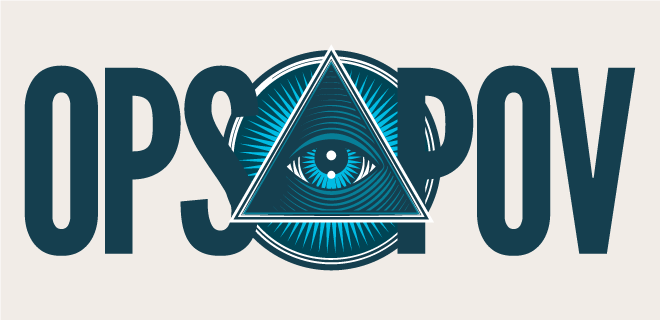
As viewability and click-through rates lose credibility as metrics, predictive attention is emerging as a signal of quality. Publishers like the Financial Times are already seeing it show up in RFPs—a sign it could become the next viewability benchmark.
Advertisers aren’t just talking about attention; they’re inching closer to buying on the metric. As brands look for new ways to assess inventory quality and avoid low-value impressions, predictive attention is making a play to become the new viewability.
Predictive attention is a pre-bid estimate of how likely an ad is to capture human attention, based on the quality of the placement, creative characteristics and behavioral data. Unlike viewability, which only measures whether an ad appeared on screen, predictive attention forecasts whether someone will actually notice and engage with it.
At the Financial Times (FT), the shift is already underway. “We’re certainly seeing AU [Attention Unit, a predictive attention metric from Adelaide Metrics] and attention mentioned in RFPs these days,” said Brandan Spain, head of advertising at the Financial Times. “It has become an objective in RFPs and planning.”
To activate AUs, Adelaide uses trackers for online video and display that are applied directly in the ad server, although the company can also offer code-on-page solutions if that’s a publisher’s preference. For CTV and audio, Adelaide can measure using either a pixel or campaign log files. Across channels, AU measurement operates without user-level tracking or platform overlays.
While attention hasn’t yet replaced viewability as a formal currency, Spain and his team are using Adelaide’s AU score to evaluate their inventory and guide recommendations to advertisers. This score allows the FT team to identify high-performing sections of the site, understand which formats and content types drive the strongest engagement and even benchmark performance by audience role, such as chief investment officers or “the C-suite minus one,” the group of people who report to top leadership.
Attention metrics like AU aren’t a billable line item yet for the FT, but its inclusion in an increasing number of RFPs is reshaping how publishers think about value. “We’re not at a point where we’re necessarily charging more for those placements with high AU scores,” Spain said. “But we’re certainly starting to think about how we think about our CPMs, and we think about placements based on what clients are asking for.”
It’s a familiar progression for publishers, who’ve had to adapt to earlier shifts in measurement, from viewability thresholds to custom CPMs based on advertiser-defined benchmarks. Attention is following a similar path: first requested, then optimized toward and eventually priced in.
A Signal That Can’t Be Faked
One reason attention is gaining traction is that it resists the kind of manipulation that’s long plagued other metrics. High CTRs can be driven by bots. Viewability just means an ad appeared on screen, not that anyone looked at it. But attention is harder to game.
“There are only two markets where people spend $10 million and then put their hands together and say, ‘I wonder what I got.’ The first is media, and the second is gambling,” said Marc Guldimann, founder and CEO of Adelaide Metrics.
Predictive attention seeks to eliminate that uncertainty by rating the quality of a placement before the impression is served, making it harder to fake. For both buyers and sellers, that makes attention not just more credible but more actionable.
The Attention Journey
So why are more advertisers including predictive attention goals in their RFPs?
What began as a post-campaign reporting layer is now being used to shape strategy from the very start. As predictive attention tools come to market and grow in sophistication, attention has evolved into a planning mechanism, one that influences everything from creative testing to media investment.
“Campaign success comes from fine-tuning multiple elements—creative, placement, frequency—for maximum impact,” said Viktor Zawadzki, vice president of platforms at Adlook, a DSP focused on cookieless buying. “Attention helps reassess whether current strategies are truly working.”
This shift is the “Attention Journey,” according to Mike Follett, CEO of Lumen Research, a global attention technology company. It begins with brands pretesting creatives to see how much attention they garner compared to a baseline. From there, the brands use that insight to inform placement selection, creative refinement and mid-flight optimization of the campaign. Some advertisers still use attention as a way to validate performance after the fact. But, increasingly, it’s influencing how budgets are allocated and what counts as success.
Publishers need to be ready to support buyers who are using attention as a planning signal. That means publishers should understand which formats, placements and content types drive the most attention—and structuring their sites accordingly to increase their predictive attention scores.
Preparing for What Comes Next
Predictive attention may not be a formal buying currency yet, but it probably will be in the not-too-distant future.
“You’re not going to get in any trouble by at least trying to get an understanding of where your publication sits right now when it comes to attention,” FT’s Spain said. “It might not be the right time to do a full-scale redo of your site in order to optimize” for attention, he said. “But if you’re in the consideration set of possibly changing things up, this is definitely a metric that I think we’re going to see pop up more frequently.”
In other words, publishers don’t need to overhaul their pages overnight, but they do need to be ready. If predictive attention becomes the next viewability, understanding how your content performs—and what your buyers are really asking for—will no longer be optional.
Most quality publishers are already well positioned, observes Guldimann. “The high-quality guys don’t need to make a lot of changes,” he said. “They’re already producing high-quality products. It’s just about having the market understand what that quality is.”
If predictive attention becomes the new viewability, then high-quality publishers may find themselves rising in the option of that market.